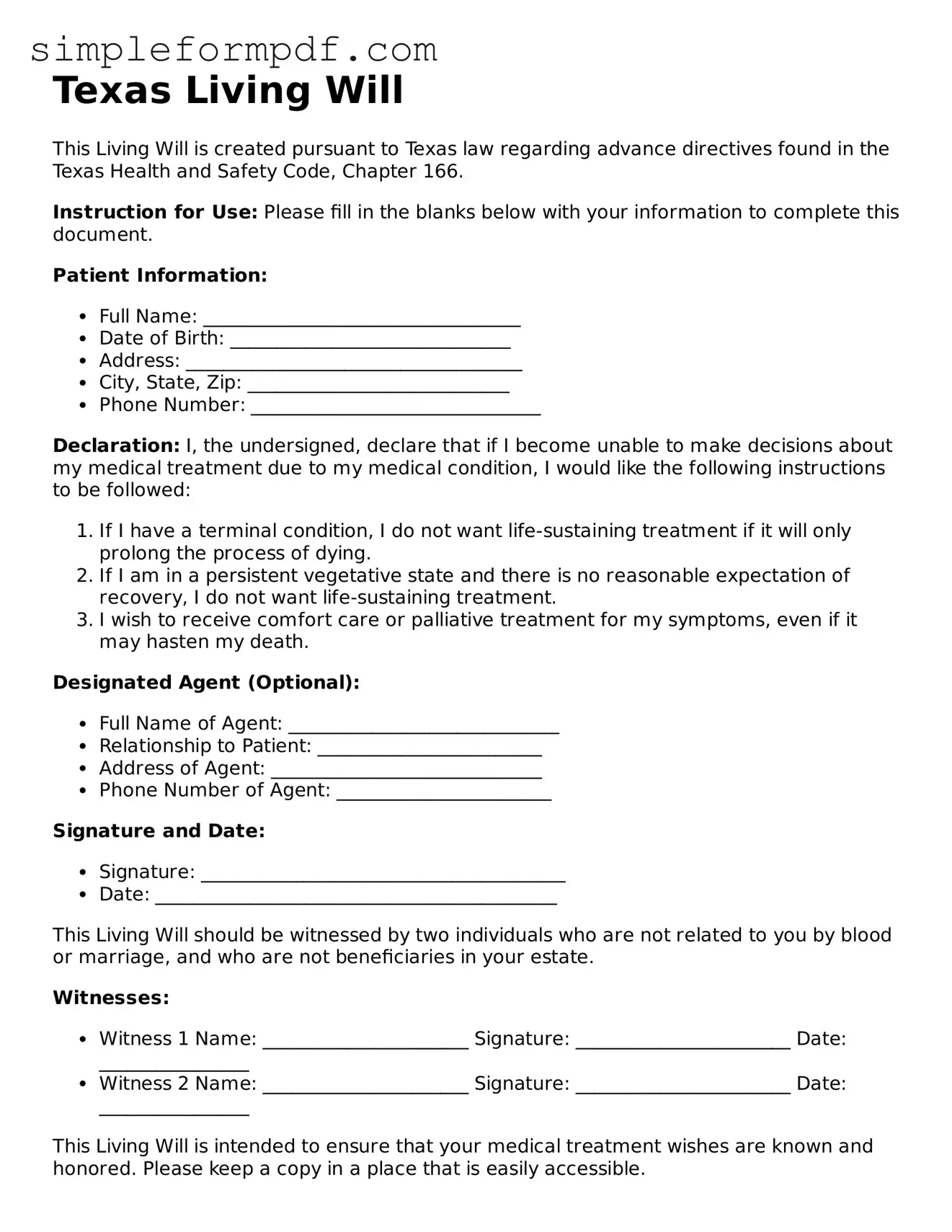Texas Living Will
This Living Will is created pursuant to Texas law regarding advance directives found in the Texas Health and Safety Code, Chapter 166.
Instruction for Use: Please fill in the blanks below with your information to complete this document.
Patient Information:
- Full Name: __________________________________
- Date of Birth: ______________________________
- Address: ____________________________________
- City, State, Zip: ____________________________
- Phone Number: _______________________________
Declaration: I, the undersigned, declare that if I become unable to make decisions about my medical treatment due to my medical condition, I would like the following instructions to be followed:
- If I have a terminal condition, I do not want life-sustaining treatment if it will only prolong the process of dying.
- If I am in a persistent vegetative state and there is no reasonable expectation of recovery, I do not want life-sustaining treatment.
- I wish to receive comfort care or palliative treatment for my symptoms, even if it may hasten my death.
Designated Agent (Optional):
- Full Name of Agent: _____________________________
- Relationship to Patient: ________________________
- Address of Agent: _____________________________
- Phone Number of Agent: _______________________
Signature and Date:
- Signature: _______________________________________
- Date: ___________________________________________
This Living Will should be witnessed by two individuals who are not related to you by blood or marriage, and who are not beneficiaries in your estate.
Witnesses:
- Witness 1 Name: ______________________ Signature: _______________________ Date: ________________
- Witness 2 Name: ______________________ Signature: _______________________ Date: ________________
This Living Will is intended to ensure that your medical treatment wishes are known and honored. Please keep a copy in a place that is easily accessible.
